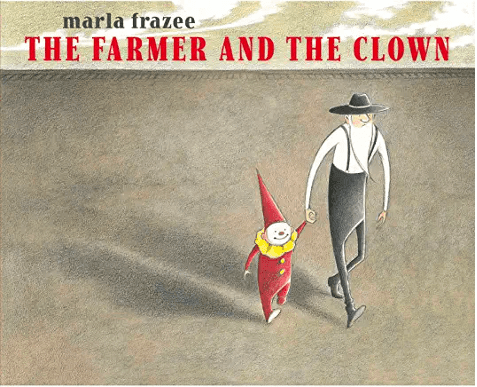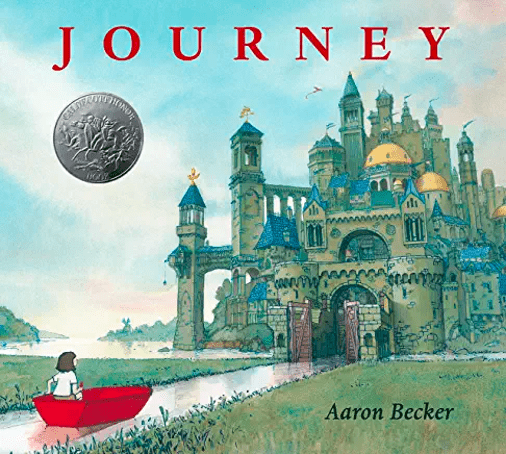I have recently become enamored by wordless picture books, and thought I would share some of my thoughts as well as highlight a few of the fine examples we have in our children’s collection.
When an adult picks up a picture book and opens it to see page after page without words, the first reaction, as was mine at times, is that something is missing—the author’s text which conveys the story. But I have come to realize that wordless picture books have a magic unique to them. Through carefully composed pictures, it draws children in and gives them a say. Children can independently inhabit such a picture book and travel across the pages, creating their own narrative. When a child puts his own words to the story, it becomes theirs in a way that a conventional picture book doesn’t.
Wordless picture books have other benefits as well. They contribute to increasing or generating language development, if a child is telling the story out loud to a companion. They also promote observation of pictorial detail in order to determine the direction of the narrative. Predicting what one might see when the page is turned is another skill that is employed. Sometimes, the child comes upon the totally unexpected with the turn of a page which motivates the “picture reading” journey to continue!
Below are a few favorite wordless picture books of mine. All are in our collection. Look for a display of wordless picture books in January and February.

The book opens with an old farmer at work when a passing circus train in the distance gives him pause. Something flies off the last car—a young clown! With an artistic simplicity, Frazee is able to depict the farmer’s gruffness and the little clown’s impishness as the farmer brings his new companion to his deserted farmhouse. Using a quiet palette of browns along with happy reds and yellows, the contrast of the two characters is immediate. As the pages are turned, their relationship develops in a way which is more poignantly expressed in pictures than words may have done. The story ends with an unexpected event which is open-ended. What is next?

A young boy reclines on his bed, engrossed in a book about Africa. A spiral drawing pad leans against the bed frame and sharpened pencils lie on the nightstand. The next frame shows the boy with pad opened on his knees as he intently begins sketching. Rectangles of color grow across the page showing the same boy striding across an African landscape with easel, drawing pad, and a pack filled with some essentials—some of which an observant child might notice had originally been seen in the boy’s room.
And so, the adventure begins with a turn of the page. Full page, colored illustrations follow showing the boy on an art safari, sketching African wildlife beginning with a majestic elephant who ends up transporting him from one scene to the next. Part of the joy of a wordless picture book is looking for the small clues that connect the story’s thread or startle with surprises. These are all part of Colón’s beautifully crafted book, such as the small white bird that subtly appears in each scene. Humor, excitement, and sentiment emerge in this wordless classic.

Journey opens with a double-page spread of a lonely girl sitting on the stoop of her city apartment building along with her bright red scooter. All other tones are in muted shades of color except for a purple crayon held by a solitary boy placed near a trio of playing children. With the turn of the page, we see the girl at home hoping to find someone in her family to engage with. Dejected and alone, she suddenly spies a red crayon on her bedroom floor. Picking it up, she draws a curved door on her bedroom wall.
Here the magical journey begins, as the door opens to an enchanting forest and stream. Again, with the use of her red crayon, she creates a small, red boat which takes her to an intricate castle of waterways and waterfalls. As her perilous adventure continues, the girl’s red crayon comes to her aid. With the appearance of a purple bird adding a new splash of color, the girl calls on her courage and compassion. This new color is also a portent of things to come. Journey has a most satisfying and creative ending—or is this not actually the end? Becker’s intricate illustrations require a return to the book’s beginning to look for connections easily missed with the first “reading.”